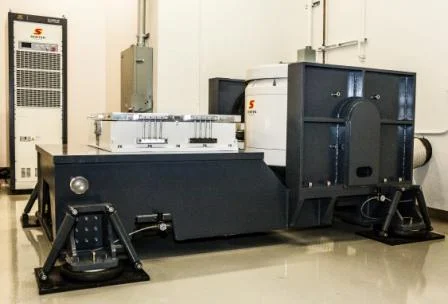In this blog post, we will discuss the benefits of using Multi-Resolution, a feature available in Vibration Control Systems, to offer a better frequency resolution in the lower frequencies of the Sine-on-Random vibration spectrum. The same benefits are also applied to the general Random test, and Random-on-Random mixed mode test.
Read moreSwept Sine Test Measurement Strategy
A Swept Sine test is a type of vibration test where the controller excites one specific frequency via sinusoidal voltage drive. As opposed to a Random test, where a broadband of frequencies is excited together like white noise, the Swept Sine test produces a response with energy in the primary frequency and its harmonics (i.e., frequencies that are multiples of the primary frequency).
Read moreNew Vibration Utilities Mobile App
Four Popular EV Battery Vibration Testing Profiles
Lithium-ion batteries are gaining popularity as the most common battery type used for electric vehicles. During their lifespan, these batteries undergo a variety of vibrations and temperature changes. Several common test standards have developed to simulate the long-term environmental effects on these batteries across different size levels (e.g. cell, module, pack).
Of the many test standards for EV batteries, this post will specifically focus on the vibration and temperature aspects of four well-known standards: SAE J2380, SAE J2464, IEC 62660-2, and UN 38.3.
Crystal Instruments Spider systems can provide solutions for random, sine, and shock vibration test, as well as temperature control.
Read morePID Control Theory
PID control is a very simple and powerful method for controlling a variety of processes, including temperature. The acronym PID stands for “Proportional, Integral, and Derivative”.
Read more
